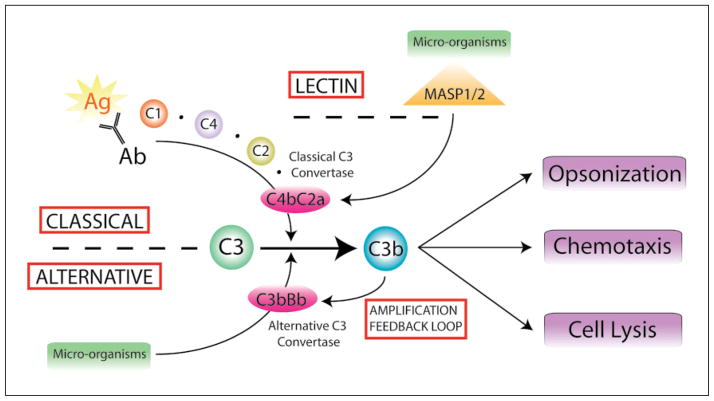Fig. 1.
There are three pathways to complement activation. To date, complement activation is known to occur through the classical, alternative and lectin pathways. These inter-related molecular cascades share their ability to induce the assembly of C3 convertase, an enzyme that cleaves C3 to its active by products, C3a and C3b. C3 activation channels into a terminal pathway via C5 that leads to the assembly of the membrane attack complement. Classical complement activation is initiated by antibody/antigen recognition, C1 binding and formation of classical C3 convertase, C4bC2a. Conversely, the alternative pathway does not require immunoglobulin and is perpetuated by the binding of C3b to microorganisms and cell surfaces in order to join with cleaved factor B, Bb, and form C3bBb. This complex serves as the alternative form of C3 convertase and regenerates C3b thereby creating a feedback amplification loop. The lectin pathway is regulated by the proteases MASP-1 and -2 which interact via mannose-binding lectin-bound microorganisms to aid in the formation of C3 convertase. All three pathways result in robust host responses to increase opsonization, leukocyte chemotaxis and cell lysis.

